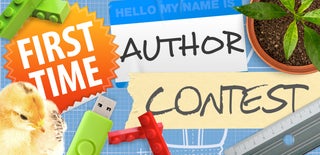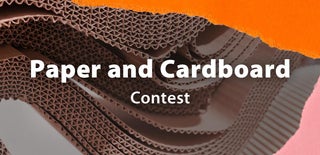Introduction: Humpback Whales
My completed recent paper mache project of mother and calf humpback whales.
Step 1: Making the Armatures.
The process of making the armatures was the same for both whales only to different scales. I worked from an A4 sized line drawing of a humpback. For the mother I multiplied the dimensions by three and for the calf by 1.2.
I made sure I stayed within this original outline to maintain the correct shape. I used masking tape to attach wire to the tail flukes and flippers and also the tail section of the mother. This allowed shaping of these features to create a more lifelike appearance. The body shape was achieved by filling it all out with bubble wrap and then covered with masking tape.
Step 2: Paper Mache
I then like to coat the armature in at least one layer of paper mache strips. This when dry firms everything up and makes for a nice surface for the paper clay in the next step to adhere to.
Step 3: Paper Clay.
Next step I apply a thin layer of paper clay. The recipe for this and other recipes I use can be found on Jonni Goods fantastic website, Ultimate Paper Mache .com. http://www.ultimatepapermache.com/paper-mache-reci...
I strongly suggest you look this site up, it is a fantastic introductory to Paper mache and has had me hooked since I first discovered it. Product names for the different products used vary around the world. It is basically made of pulped toilet paper, Elmers or PVA glue and Gibstop or Dry Wall compound with a little bit of linseed oil. It can be shaped and molded and once dry can be sanded. For the mounting of the whales I used an old vehicle windscreen phone mount, part of which I epoxied to a small piece of 6mm MDF board, I then epoxied this to the armature.This was covered with both layers of clay so that only the black part was showing. The second layer of clay is the one I add all the detail to including, the eyes, throat pleats and lips etc. For the callouses I used polystyrene bean bag fillers.
Step 4: Gesso Time
Final coat is a gesso which is a mixture of Gibstop or drywall and PVA or Elmers glue. Again check out Ultimate Paper Mache .com for recipe details. This coat when dry can be sanded back to an almost ceramic like finish. The photo of the flippers shows it still wet while in the others you can see it dry and sanded. The flippers had wires extending out of them which were used to attach them the bodies once small holes had been drilled. These were epoxied in place and then clay and gesso covered the joins adding muscle structure and shape to the join. You can also see the completed phone mount here which had two holes drilled into it for the fixing bolts that bolted the completed whales to the backing board. All that was left now was the painting of the backing board and the whales. I wanted it to look like they were diving so you could see the underside of the surface of the water with the sunlight reflecting through. All in all I am very happy with the result and as this is my first "Instructable" I will be entering it into the competition.

Participated in the
First Time Author Contest












